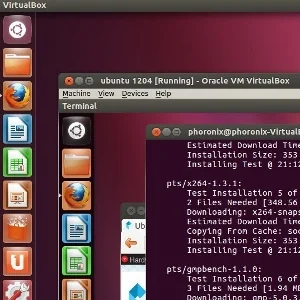KVM-QEMU Provides Support For USB 3.0

Over on Linux-KVM.com they have the brief guide for how to enable USB 3.0 support within QEMU 1.1. This feature is currently experimental so it's not enabled by default or widely advertised, but it's available for those who want it.
Enabling USB 3.0 device support for KVM virtualization basically requires adding a new USB XHCI controller for qemu-kvm and then attaching the device to this virtualized controller. USB storage emulation should work but devices that need constant polling will not (such as a USB tablet), ISO xters are not implemented, USB pass-through is un-tested, and SuperSpeed ports are currently not implemented.
QEMU 1.1 with this experimental USB3 support was released at the beginning of June but just last week the QEMU 1.1.1 point release was made available. Other QEMU 1.1 features include support for PCI-to-PCI bridges, a Calxeda Highbank ARM model, a Versatile Express Cortex-A15 ARM model, KVM x86 guests support Hyper-V enlightenments, improvements to floppy disk emulation, and much more.
Add A Comment

